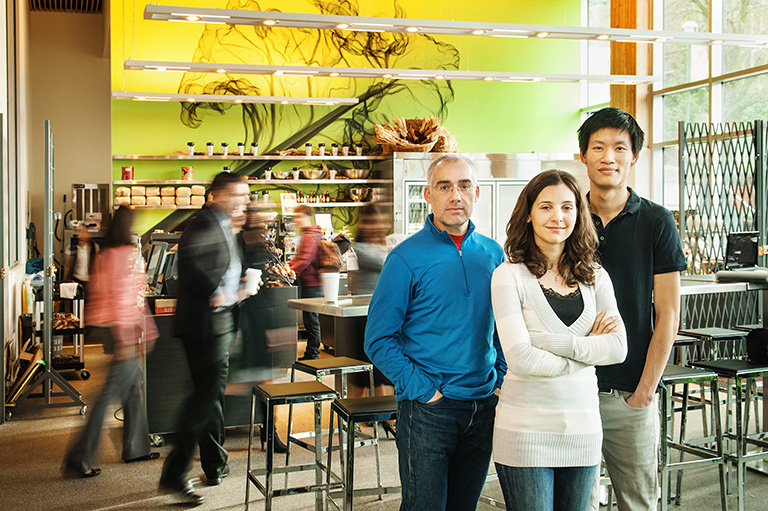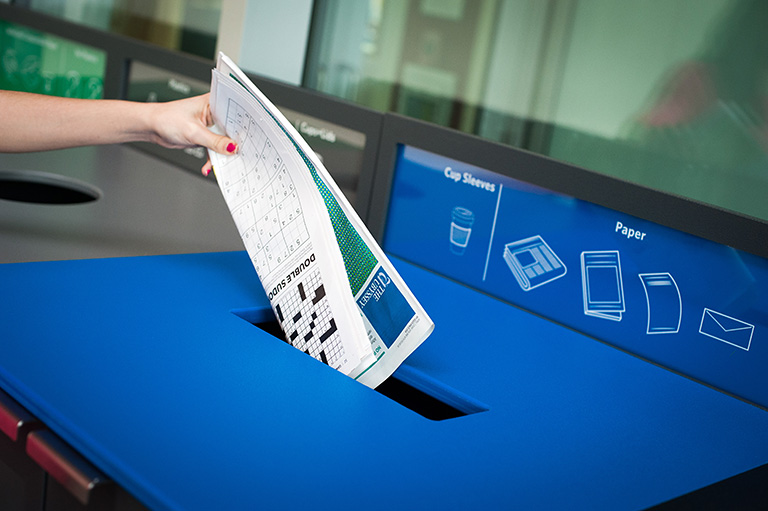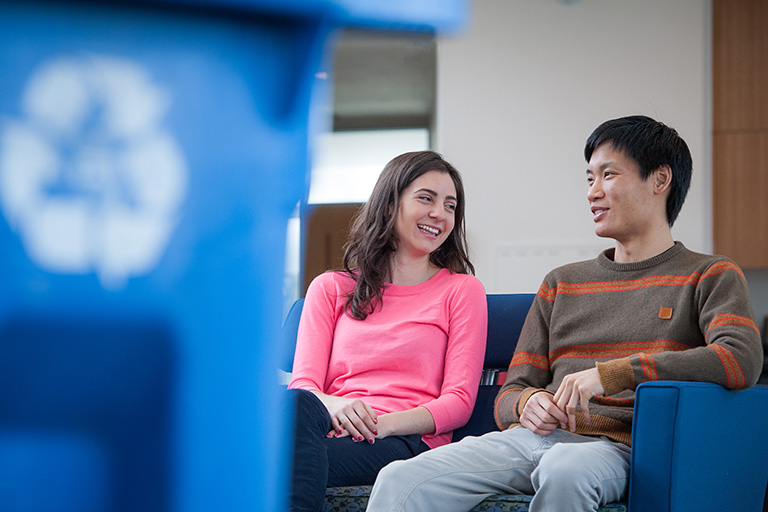A Green Subconscious
On the UBC Vancouver campus, the walls do ‘speak’ and apparently, some far more persuasively than others.
To assist the UBC Campus Sustainability ‘Sort it Out’ program and to underline the campus as a ‘living lab’, the UBC Department of Psychology monitored the recycling outcomes at two popular eating areas in two very differently designed buildings on the Vancouver campus: the Student Union Building (SUB) and the Centre for Interactive Research on Sustainability (CIRS).
The question posed by the study leads, psychology grad student Alessandra DiGiacomo and second-year law student David Wu: Can a ‘green’ environment subliminally influence more people to sort, separate and recycle their post-meal disposables?
The answer: yes and in a significant way.
Both are high traffic buildings, both accept compostable and recyclable materials, both have the same mix of students and the same mix of dine in and grab-and-go clientele.
In the SUB dining areas, 58 percent of people recycled their post-meal leavings, 42 percent did not. At the CIRS cafe, it was 86 percent and 14 percent. Difference: 28 percent more material entering the recycling stream.
“We don’t think it’s because [CIRS visitors] happen to care more about the environment,” says DiGiacomo. “There’s something about the building itself and it’s happening at an automatic, unconscious level.”
Blocky, basic design the current Student Union Building (SUB) is concrete and glass, circa the 1960s. Utilitarian and hard-edged with an ‘auditorium’ feel, it has been much-loved by generations of students at UBC but perhaps not inspiring a high percentage of environmental behaviours.
The Centre for Interactive Research on Sustainability (CIRS) opened in 2011 as one of the leading ‘regenerative’ buildings in North America boasting zero-carbon emissions, zero waste, water self sufficiency and a net-positive energy performance. Bright and airy with a ‘living plant’ wall and lots of wood elements CIRS was designed to help create ‘behavioural change’ in subtle ways. More of an organism than a building, CIRS has already won LEED Platinum status with the Living Building Challenge of Cascadia (LBC) Petal Certification expected to follow.
Despite its name, CIRS doesn’t host a disproportionately large number of environmentally-focused classes. In fact, notes Dr. Alan Kingstone, head of UBC Department of Psychology, “most people we observed didn’t even realize that it was a ‘sustainable’ building.”
But once within it, influenced only by the design, people act more responsibly by almost 30 percent. Even with its ‘eco-aware’ focus, UBC itself produces some 3,000 tonnes of landfill per annum so every effort towards recycling and the environmental design that supports it, is worthwhile to pursue.
Extrapolated into the greater world and recycling industries where volume equals better cost-efficiencies and where the existing landfills are being overwhelmed, the implications of the study (now published in the PLOS ONE journal) are significant.
“Just by making buildings more sustainable, it seems like a really practical way to implement change,” says DiGiacomo. “You don’t need to deal with individual behaviours. You’re getting things done on a group scale.”
Adds Kingstone: “There’s a beauty of that kind of power where you can provoke pro-social behaviours without actually forcing change on people.”
Subliminal or not, sorting it out is the preferred choice at UBC.
Read more about
SustainabilityRead more Sustainability stories:
This story also illustrates our commitment to:
Community Engagement Research Excellence Student LearningRelated Content

“There’s a beauty of that kind of power where you can provoke pro-social behaviours without actually forcing change on people.”

Campus
Vancouver
Wouldn’t the Centre for Interactive Research on Sustainability be attracting people who are already aware of sustainability? Who are the people who eat there? Do they work in the Centre? What is the difference in food choices between both buildings? Would undergrads be interested in eating in this building? Are the clientele older in the Centre? There might be many reasons more people recycle in this building, not just its design. I’d like to know more about it!